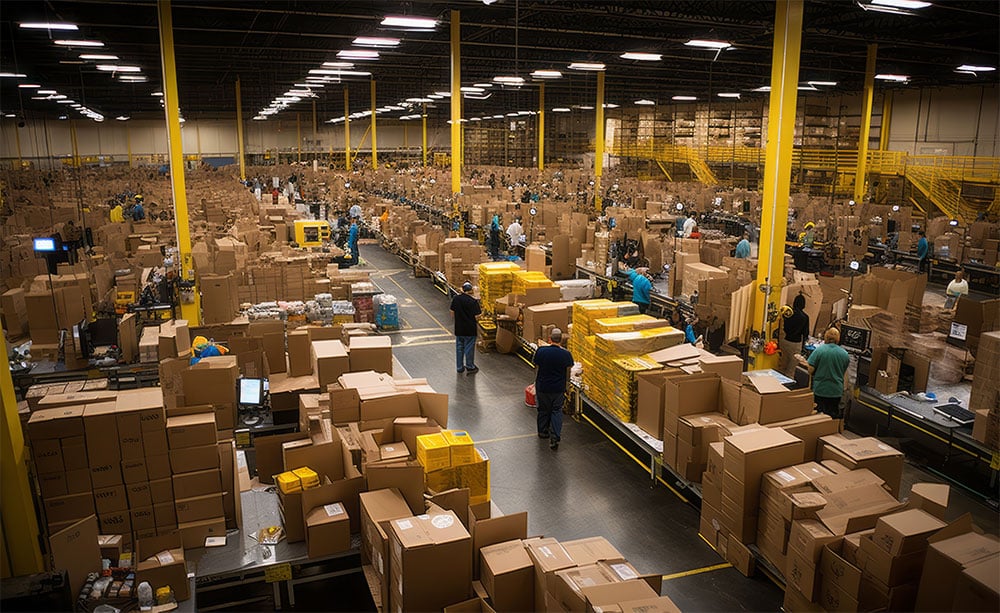By Ron May, Senior Solutions Consultant, Lucas Systems
If you are like me, one of the biggest joys of the holiday season is being able to catch Rudolph the Red-Nosed Reindeer when it makes its annual appearance on our TV screens. The story of perseverance, acceptance and eventual triumph is one that resonates with audiences of all ages.
But as I’ve watch Rudolph over the past couple years against the backdrop of the pandemic and the havoc it brought to the supply chain, especially during the holiday season, I began to view the story through a different lens. It’s a cautionary tale about supply chain disruption. One that was ultimately solved by a unique solution and its innovative use!
Here me out… What were some of the traditional supply chain standard operating procedures (SOPs) that caused problems and disruptions with Santa and his crew?

- Over-reliance on manual processes – Manual processes, like elves building toys, can be slow and prone to errors, (see misfit toys!) leading to delays and disruption throughout the entire supply chain process from materials sourcing through delivery of finished goods. If possibly Santa had implemented software to help process orders, or robots to take over some more repetitive production tasks, he could shorten cycle times and put less seasonal stress on his elves. The elf production model also exposes another problem that the pandemic (or the “storm of storms,” as Burl Ives put it) brought to the forefront.
- Single-sourcing of products – For years, many suppliers pushed to reduce cost and encourage standardization of products by utilizing a single supplier, sometimes in areas that were not geographically in close proximity to final product destinations. While in stable environments, this strategy makes solid sense, in times of uncertainty, having several options (multi-sourcing, alternate or back up, suppliers/distributors, nearshoring) for production and distribution can give you the options you need to ensure resilience.
Similarly, it seemed that old Santa had …
- Minimal visibility into supply chain operations – Owing somewhat to its manual nature (“makin’ a list and checkin’ it twice”), Santa’s traditional supply chain lacked the ability to keep track of inventory levels, order status, and shipment progress in real-time. This made it difficult to adapt quickly when demand shifted or when disruptions occurred. Perhaps if Santa had better monitored market and weather conditions, he could have taken a page out of Wal-Mart’s book and set up ecom fulfillment facilities to help mitigate the holiday surge and have product proactively available closer to its final destination to alleviate possible travel difficulties brought on by the storm.
- Hesitation to explore innovation and automation – Santa is likely among the operators that says they are investigating innovation and automation, but has yet to implement an upgrade plan, similar to the 66% of warehouse and DC operations that still rely on manual processes reported in our Voice of the Warehouse Workers Insights. Thinking differently about how you approach operations, trying new processes, reimagining the division of labor and utilizing previously dismissed alternatives (Go Rudolph!) to drive the disposition of goods helped turn difficulties into opportunities to improve, and ultimately ensured that a Merry Christmas was had by all.
So as you settle down to watch Rudolph this year, here’s a reminder that among the many messages and lessons imparted by the story of Rudolph the Red-Nosed Reindeer, the theme of supply chain disruption remains at the core. Sure, things like inclusion, celebrating differences and diversity, never giving up on your dreams and helping others, are all worthwhile takeaways. But don’t forget as well, Rudolph teaches us that building resilience into your supply chain model through innovation and automation, diversity of supply and distribution options, and end-to-end visibility into supply chain operations are important things too.

About Ron May
Ron May is Founding Member and Senior Solution Consultant at Lucas Systems. A global expert on warehouse process optimization, voice-directed mobile applications, and user experience, he has nearly four decades of system design, development, and implementation experience. As its chief architect and software engineer, Ron developed Lucas software solutions, including its innovative voice-directed mobile applications.
He has collaborated on hundreds of distribution center projects, including the earliest implementations of speech recognition systems for non-picking processes, and groundbreaking multimodal systems combining voice, scanning, and other data entry techniques.
Prior to Lucas Systems, he helped commercialize industrial speech recognition technology at Westinghouse Electric. Ron has a B.S. from Case Western Reserve University in Electrical Engineering & Applied Physics and Applied Mathematics.
About Lucas Systems, Inc.
Lucas Systems helps companies transform their distribution center operations and continuously adapt to changing market dynamics. We dramatically increase worker productivity, operational agility, and customer satisfaction.
Our solutions are built on 25+ years of deep process expertise and smart software using AI and voice technologies. Our solutions feature Jennifer™, the brain, voice, and orchestration engine that drives performance improvement gains. Make the smartest moves at the lowest cost with Jennifer™. For more information, visit www.lucasware.com.





